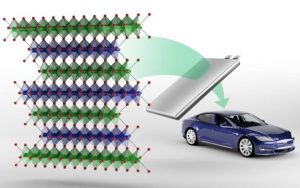Novel cathode ticks the boxes for a cobalt-free battery future
Cobalt plays an important role in the performance of today’s lithium batteries, though mining the material means exposing workers to dangerous conditions and often degrades natural landscapes and water supplies. In an effort to assist the shift away from this rare and expensive metal, scientists at Oak Ridge National Laboratory have developed an alternative nickel-based battery architecture, which they say ticks a few important boxes.
Along with nickel and aluminum, cobalt is used to build the cathode component of today’s lithium batteries but, because of its scarcity, it makes up around half of the material costs of the entire device. This, combined with the environmental and humanitarian concerns outlined above, means there is considerable effort going into the development of alternative architectures, and there are some promising possibilities on the horizon.
The team at Oak Ridge National Laboratory has been working on a new class of cathodes it calls NFA, which stands for nickel-, iron and aluminum-based cathodes. This is a derivative of lithium nickelate, which scientists have been investigating as a cathode material for some time, but they have been unable to land on the right recipe.
“Lithium nickelate has long been researched as the material of choice for making cathodes, but it suffers from intrinsic structural and electrochemical instabilities,” says leader of the research, Ilias Belharouak. “In our research, we replaced some of the nickel with iron and aluminum to enhance the cathode’s stability. Iron and aluminum are cost-effective, sustainable and environmentally friendly materials.”
The team’s testing of its new cathode demonstrated a high capacity and an ability to retain 88 percent of that capacity after 100 cycles. The researchers also built a pouch cell battery based on its NFA cathode and found, while there was a compromise on stability, it still retained 72 percent of its capacity after 200 cycles.
While the researchers describe these results as only preliminary, they believe the design bodes well for a cobalt-free future battery, with the cathode performing similarly to those in traditional batteries, without involving expensive, rare materials. They also note the fabrication technique can be integrated into global cathode manufacturing processes, and will now investigate the cathode’s performance in larger format cells and the potential for use in electric vehicles.
“Our investigations into the charging and discharging behavior of NFA showed that these cathodes undergo similar electrochemical reactions as cobalt-based cathodes and deliver high enough specific capacities to meet the battery energy density demands,” says Belharouak.
The research was published across two papers, in the Journal of Power Sources and Advanced Materials.
Source:Novel cathode ticks the boxes for a cobalt-free battery future


